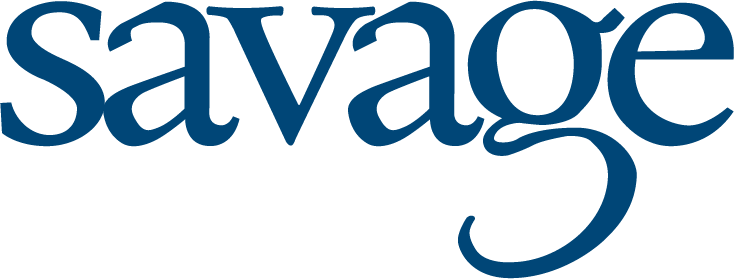CARES Act and Related Issues
- Provisions Impacting Individuals
- Small Business Paycheck Protection Program
- Provisions Impacting Employer Plans
Recovery rebates (stimulus payments) for individuals
- The government will send eligible individuals a check for $1,200 ($2,400 for married couples), plus an additional $500 for each dependent of the individual or couple under age 17.
- Individuals with adjusted gross income (AGI) of $75,000 or less, and married couples with AGI of $150,000 or less will receive the full rebate. The amount of the rebate will be phased out for individuals with AGI of $75,001 to $98,000, and married couples with AGI of $150,000 to $198,000. (The phaseout is $5.00 for every $100 of income over the threshold.)
- A plan may begin offering these enhanced loans immediately, but the plan must be amended by the end of 2022 to reflect these loan provisions.
Required Minimum Distribution (RMD) relief for 2020
- Required Minimum Distributions otherwise payable in 2020 from defined contribution plans (money-purchase pension, profit sharing, 401(k), 403(b), 457, ESOP) and IRAs (including SEPs and SIMPLEs) will not have to be paid.
- Includes initial RMD of an individual who turned 70 1⁄2 in 2019, with payment deferred into 2020.
- Includes life-expectancy (stretch) payment to a beneficiary.
- Beneficiaries with account or IRA balances subject to payment under the 5-year rule have an additional year to deplete the account. (Account must be distributed by the end of the sixth year following the year in which the account owner died.)
- This relief is retroactive to the beginning of 2020, and distributions already received in 2020 may be rolled back into an IRA or other plan which will accept it, if the account owner chooses to do so.
- It is expected, but not certain, that the IRS will waive the 60-day indirect rollover requirement for moving RMDs back into a plan or IRA.
- It is also expected, but not certain, that the IRS will waive the one indirect rollover per 12-month period for 2020, allowing individuals receiving periodic payments of RMDs in 2020 to roll those payments back into IRAs and employer plans, as they choose.
Penalty free distributions from IRAs and retirement plans in 2020
- Coronavirus impacted individuals under 59 1⁄2 can withdraw up to $100,000 from their IRAs or employer plans (or their account balance, if less) without a 10 percent premature distribution penalty.
- Employer plans do not have to allow these distributions. If a plan sponsor/employer chooses to allow these distributions, the plan can begin making them immediately, but the plan must be amended to allow for these distributions by the end of 2022. (Governmental plans have until the end of 2024.)
- A coronavirus impacted individual is a person who has been infected with the coronavirus; has a spouse or dependent who has been infected with the coronavirus; has suffered adverse financial consequences due to the coronavirus (this includes: being quarantined, being furloughed, laid off, or having work hours reduced, being unable to work due to lack of childcare, closing or reducing hours of a business owned or operated by the individual).
- A plan or IRA custodian can rely on the participant’s statement that he or she is a coronavirus impacted individual.
- The distribution must be taken between January 2, and December 30, 2020.
- This is a distribution, not a loan, and will be taxable unless rolled back into an employer plan or IRA as discussed below.
- The $100,000 is an aggregate amount, not a per-plan amount, which means that $100,000 is the maximum a person can withdraw penalty free under this provision, from all plans or IRAs in which the person is a participant.
- The $100,000 is a per-individual amount, which means that a married couple can withdraw up to $200,000—assuming each spouse has at least that amount in his/her accounts.
- If coming from an employer plan (money-purchase pension, profit sharing, 401(k), 403(b), 457, or ESOP), the distribution will not be subject to 20 percent mandatory withholding.
- The amount withdrawn (without increase or decrease for any gains or losses occurring after the distribution) can be rolled back into an IRA or employer plan which will accept it.
- The distribution, or any part of it, can be rolled back into a plan or IRA. The distribution does not have to go back into the plan it came from.
- The rollover must occur in the three-year period beginning on the day after the distribution was received.
- The distribution will be included in the recipient’s taxable income in equal amounts in 2020, 2021 and 2022, unless the recipient chooses otherwise. This means the recipient could choose to include the distribution in income in a single year, or two years of the three-year period.
The Small Business Payroll Protection Act provides small businesses with interest-free, unsecured loans to cover payroll and benefits, as well as rent, utilities and mortgage interest.
- The loans are available to businesses with less than 500 employees.
- Loans will be forgiven if used for the above expenses (with the requirement that at least 75 percent of the amount forgiven be used for payroll).
- The amount that a business can borrow will vary and is based on the amount needed to cover the above expenses for eight weeks.
- Loan forgiveness is based on the employer keeping employees on the payroll, or quickly rehiring them, at current compensation and benefits. This means some of the loan will not be forgiven—and will have to be repaid, at one-percent interest—if the number of employees, or compensation or benefits is reduced.
- Loan payments are deferred for six months.
- No loan fees charged by government or lenders.
Increase in the participant loan limit:
- If the plan allows, a coronavirus impacted individual (as defined above) may take a loan from a plan up to the lesser of $100,000 or 100 percent of the individual’s vested account balance.
- The loan must be taken on or before September 23, 2020 (180 days following enactment of CARES).
- The plan can generally allow loan recipients to delay the beginning of payments on the loan for up to one year.
Treatment of existing loans:
- For coronavirus impacted individuals with a loan outstanding on 3/27/2020, any loan repayment due between 3/27/2020 and 12/31/2020 shall be suspended for one year.
- At the end of the one-year period, loan payments will be adjusted to reflect accrued interest, and the term of the loan will be extended for one year.
Contribution deadline for pension plans:
- For defined benefit and money-purchase pension plans, the deadline for any contribution required to be made in 2020 has been moved to January 1, 2021.
- The employer must pay interest on the delayed contribution, from the original due date of the contribution, at the rate specified in the plan.

